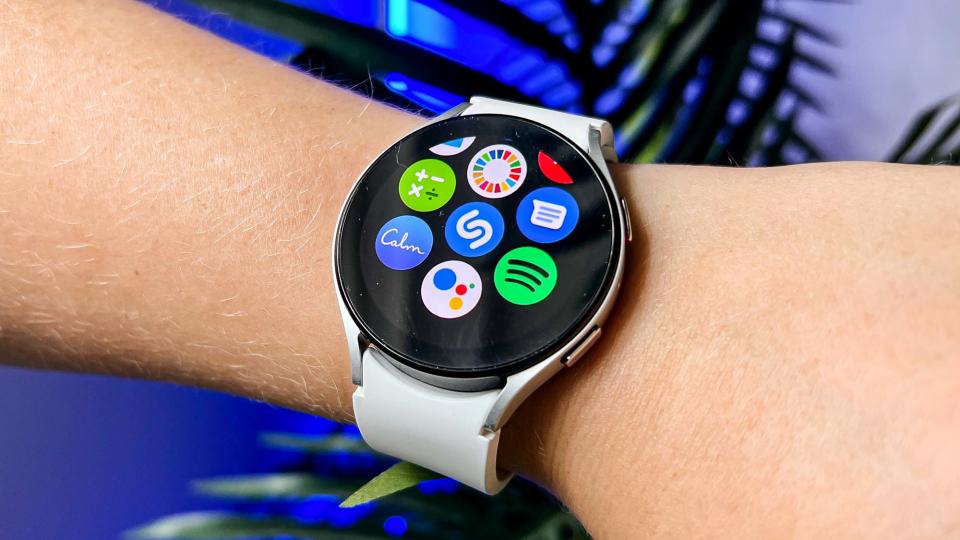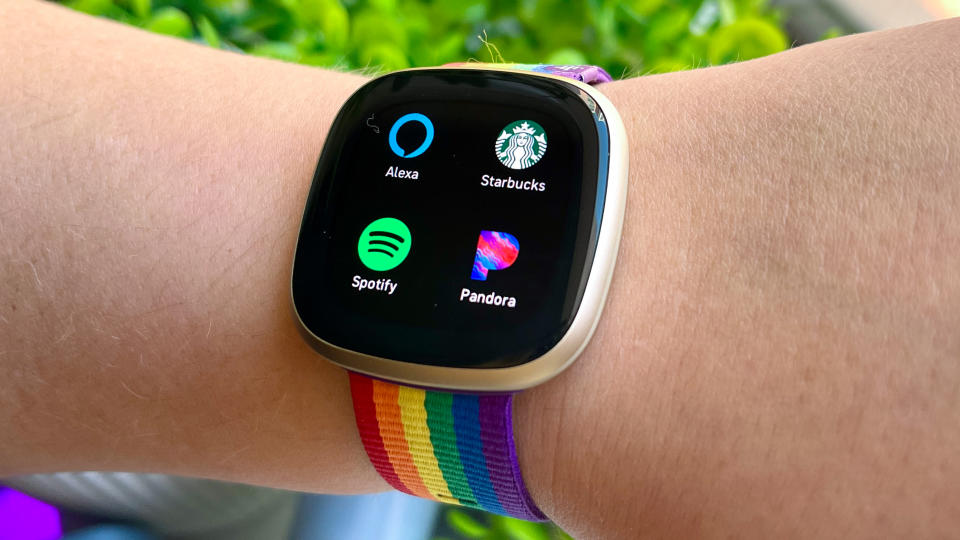Smartwatch buying guide: Everything you need to know

This smartwatch buying guide breaks down all the different factors you should consider when deciding whether the Apple Watch, a Samsung Galaxy Watch, a Fitbit or offerings from other top wearable makers is right for you.
The best smartwatches we've tested are all excellent in their own right, but they're not one size fits all. From big technology brands such as Apple, Samsung and Fitbit to traditional watchmakers like Tag Heuer and Fossil, dozens of companies have smartwatches that deliver notifications, apps and more to your wrist. New models like the Apple Watch Series 8 and Samsung Galaxy Watch 5 push the capabilities even further.
Although features and designs vary, smartwatches can help save you time and keep better tabs on your health. Most have have built-in fitness metrics, such as a heart rate sensor and GPS. Some can act as an extension of your phone, while others are marketed as a health-focused devices, like the Fitbit Sense.
Some smartwatches, such as the Apple Watch SE, even work independently of a phone. But if you want something that gives you a break from your notifications, one of the best fitness trackers might be better for you.
We've also reviewed a number of affordable options to see which of the best cheap smartwatches are worthwhile. So whether you're on a budget, have specific fitness goals or want to be more productive, here's a smartwatch buying guide for determining which wearable you should get.
Smartwatch buying guide: Quick tips
Compatibility: Don't buy a smartwatch without confirming that it will work with your smartphone. For example, Apple Watches only work with the best iPhones. We put together a guide to the best smartwatches for Android for options that pair to your Samsung, Google or other Android smartphone.
Fitness features: Pick a watch with a heart rate sensor and GPS (to track your runs) if you're a fitness buff. You can see our guide to the best running watches if that's your sport of choice. And check out our showdown of the Apple Watch 7 vs. Garmin Instinct 2.
Battery life: Pay attention to rated battery life when shopping. Hybrid smartwatches that look more like analog timepieces tend to have the longest battery life, but they don’t have touchscreens.
Swappable watch bands: Check that the watch band's clasp or buckle is easy to use and easy to swap. Also make sure that it’s easy for you to find replacement bands.
App availability: The selection of apps is a factor, and something that makes Wear OS vs. watchOS different. That said, it’s not as important as compatibility, design and other features.
Smartwatch buying guide: OS and phone compatibility
Because most smartwatches are designed to serve as companions to your smartphone, device compatibility is very important. For instance, the best Fitbits like the Fitbit Versa 3 and Fitbit Versa 2 work with multiple Android handsets as well as iPhones. Although you should note Android phone owners do get one extra feature: quick replies to incoming text messages and the option to answer phone calls.
The new Google Wear OS runs only on the Samsung Galaxy Watch and Montblanc Summit 3 right now, but it's coming to all smartwatches powered by the Qualcomm Snapdragon 4100 chipset. We made a guide to Wear OS eligibility, but right now it basically just Mobvoi's TicWatch Pro 3 and the TicWatch E3.

Not surprisingly, the Apple Watch only works with the iPhone. The preinstalled Apple Watch app for the iPhone is where you'll find the watchOS App Store. There, you can install the watch versions of your favorite iOS apps or find new ones: The store features everything from games to fitness-tracking apps to extensions of your most-used productivity apps so you can get Slack notifications or see your lists in Todoist.
Smartwatch buying guide: OLED vs. LCD Display
Most smartwatches use a colorful LCD screen or AMOLED display, which let you view photos, apps and other content in richer color, and tend to be brighter. The trade-off is shorter battery life, though smartwatch makers are improving the devices' efficiency. Some can last several days, if not weeks, but you'll want to opt for a black-and-white display if you want the longest stamina.
Pricer smartwatches offer crisp OLED displays instead of LCD displays to allow for slimmer designs. Apple developed its first OLED display to make the first-generation Apple Watch as thin as possible. But it should be noted Samsung created the first ever, OLED smartwatch, the Galaxy Gear, in 2013.

Smartwatch buying guide: Touchscreen vs. touchless
Opting for a touchscreen on your smartwatch would seem to be a no-brainer. But it can be difficult to select items on a smaller touch display, and some of the gesture-based interfaces aren't intuitive.
Wear OS does a nice job of presenting card-based notifications you can easily dismiss with a swipe, but there's a lot of swiping involved to get to other apps and options within apps. You can, however, switch between cards with a flick of your wrist.
Apple opted for a combo approach for the Apple Watch, offering a touch display and both a digital crown and side button on the right side. You can use the crown to quickly zoom in on content or to scroll, and the screen uses Force Touch, which knows the difference between a tap and a long-press. A press of the side button brings you to your dock of frequently used apps.
The original Samsung Galaxy Watch, Samsung Galaxy Watch 3 and latest Galaxy Watch 4 have a bezel that you rotate to scroll through menus. These are used in combination with touch.
Smartwatch buying guide: Design and personalization
The better smartwatches offer a choice of straps and/or the ability to swap them out for a third-party option. This is important if you want to personalize the look of your device.
Most smartwatches today offer plenty of customization options before purchase. For instance, you can pick the band color and material, as well as face color, finish and size for the Apple Watch and Fossil smartwatches.

Keep in mind that comfort counts for a lot, as does the ease with which you can fasten the watch to your wrist. We would definitely avoid any smartwatches with cumbersome clasps that require too much force to open and close. Thankfully, most new watches use standard buckles.
More and more smartwatches are sporting round faces now, making them look more like traditional timepieces. Newer ones are getting slimmer and smaller. The Garmin Lily, one of the best Garmin watches overall, is a particularly attractive choice for smaller wrists.
Traditional watchmakers are also joining the fray with Wear OS devices that combine the style of an analog watch with the smarts of Google's watch operating system. Movado, Tag Heuer, Emporio Armani and even Louis Vuitton have jumped on board the smartwatch bandwagon with fashion-forward devices — and price tags to match. For that reason, we don't usually recommend them over devices from Apple, Samsung, Garmin or Fitbit.
Smartwatch buying guide: App selections
The smartwatch category is maturing, and some models now have hundreds or even thousands of apps.
The Apple Watch has the most well-rounded app roster thus far, with more than 20,000 available, including ESPN, MapMyRun, Uber and even Rosetta Stone. You can do everything from control your Philips Hue lights (and all the other best smart home devices) to order out lunch with Seamless.
There's a dedicated Apple Watch App Store for installing those apps in the Apple Watch app for iOS. Check out our roundup of the best Apple Watch apps for more on what to expect.

Google's Wear OS also has thousands of apps optimized for its platform. You install apps directly on the watch itself, rather than having to go through your smartphone first. Wear OS has many of the same apps that watchOS does, including Lyft, which enables you to schedule a ride, and WhatsApp, which lets you reply to messages with your voice.
Smartwatch buying guide: Fitness features, step counting, heart rate, ECG, SpO2 and GPS
As fitness trackers continue to attract attention, smartwatch makers are getting in on the action by integrating activity-monitoring functions. Some smartwatches depend on your smartphone for activity tracking, but most at least have a built-in pedometer for step counting or step tracking.
If you plan to use a smartwatch primarily for working out, you may want to consider fitness trackers with smartwatch-like features, such as the Fitbit Charge 5 or the Garmin Forerunner 245, both of which let you change the watch face and read notifications. Both offer female health features, such as the ability to log periods and record symptoms, as well as compare your cycle against health stats like sleep and activity.
Every smartwatch we recommend has a heart rate monitor built in, but we haven't always found them to be as reliable as dedicated fitness trackers like Fitbit Inspire 2. The Apple Watch heart rate sensor proved more accurate in our testing, though.
In addition to heart rate monitors certain models have GPS, which makes them more attractive to those who want to go running or biking outdoors, and want to track their distance and pace. However, keep in mind that using GPS will have a significant impact on battery life.

Other features like ECG and SpO2 monitoring might be important to you, too. Fitbit, Apple and Samsung all have FDA-approved ECG sensors in some of their newer smartwatches. ECGs can detect signs of atrial fibrillation. SpO2 monitoring is more common, reading your blood oxygen levels for signs of sleep apnea or other possible respiratory conditions.
Smartwatch buying guide: Calling and mobile payments
Do you want to make calls from your wrist? Some have built-in LTE so you can leave your phone at home — at least in theory. AT&T’s NumberSync and Verizon's NumberShare feature let you use the same number on your phone and the watch, and your phone doesn't need to be nearby or turned on. You will have to pay for a separate data plan for your smartwatch — about $10 per month — which is something to consider if you want to take advantage of its cellular connectivity.
Many smartwatches have NFC chips inside, which means you can use them to pay for stuff, even without a phone nearby. All Apple Watch models have Apple Pay enabled, even without an iPhone nearby or an LTE connection. Wear OS watches that support Google Pay. Samsung’s own mobile-payment system, Samsung Pay, works on all of its newest models.
Garmin and Fitbit, which are known for their fitness-focused watches, have added mobile payments to their latest devices, too.
Smartwatch buying guide: Battery life and charging
Most smartwatches with color screens tend to last one to two days between charges (and sometimes less than one day), so you'll want to consider how often you're willing to keep plugging in your watch.
Watches with voice capabilities won't last nearly as long when you use them as phones, but that's to be expected. The Apple Watch lasts about 18 hours of mixed use on a charge.

Most smartwatches, including the Apple Watch and Samsung Galaxy Watch 4, use wireless charging, which is convenient: You don’t have to plug your device directly into a charger; instead, you lay it flat on a charging puck.
Smartwatch buying guide: Pricing
With the exception of budget devices from no-name brands, most smartwatches will cost between $100 for older devices, all the way up to $1,600 for the Tag Heuer Connected. You'll find most smartwatches in the $200 to $500 range, depending on features and accessories.
For example, the Apple Watch Series 8 starts at $399 for a basic aluminum case and silicone band without built-in GPS, but the cost is north of $1,399 for the ceramic case or designer variants.
You'll need to decide what combination of form and function works best for your budget.
